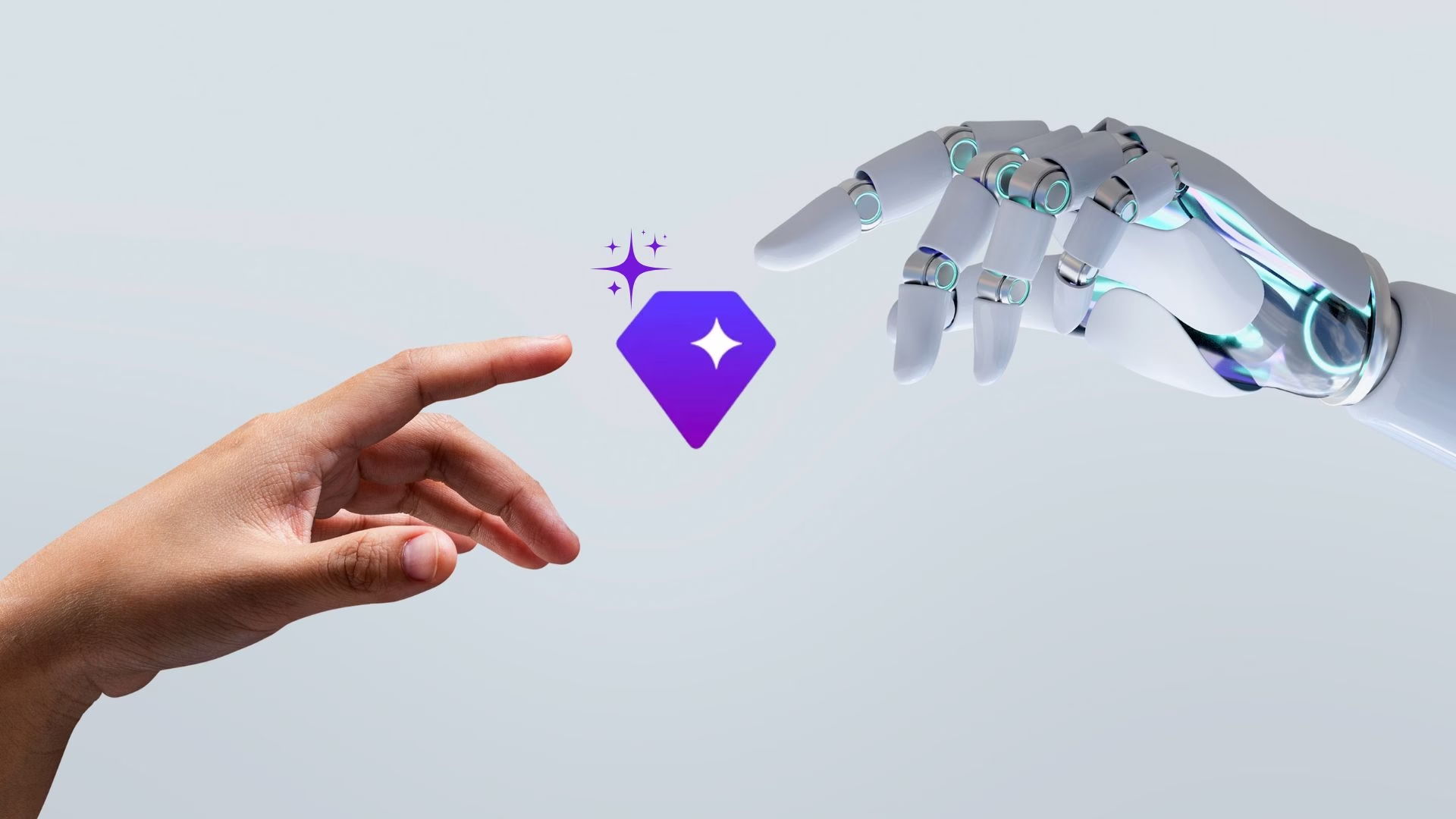Inside SAP Joule: How the AI Copilot Is Transforming Enterprise Intelligence
The enterprise landscape is undergoing a fundamental transformation. As organizations grapple with increasingly complex business processes and data sprawl across multiple systems, the need for intelligent, contextual assistance has never been more critical.
SAP Joule represents a paradigm shift in how users interact with enterprise software—moving from navigating menus and forms to natural language conversations that understand intent, context, and business logic.
The Vision: A Unified AI Copilot Across Your Enterprise
Joule isn’t just another chatbot or virtual assistant. It’s a comprehensive AI copilot embedded natively across SAP’s enterprise solutions portfolio, designed to meet users where they are and help them accomplish tasks more efficiently.
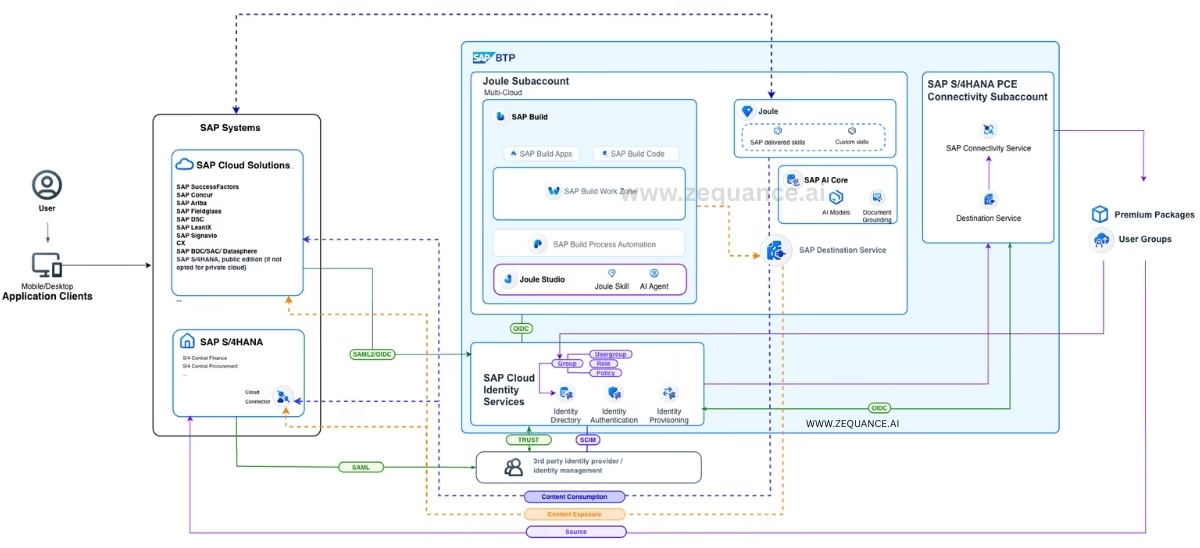
Whether you’re an HR manager approving time-off requests in SuccessFactors, a procurement specialist reviewing purchase orders in Ariba, or a finance analyst exploring trends in Analytics Cloud, Joule provides consistent, contextual assistance that remembers your interactions across products.
The power of Joule lies in its ability to understand user intent through advanced algorithms and large language models. When a user poses a question, Joule doesn’t simply match keywords—it comprehends the underlying intent and, through deep integration with SAP Business Applications, delivers appropriate, actionable responses.
Four Patterns of Interaction: How Joule Supports Your Work
Joule’s capabilities are organized into four distinct interaction patterns, each designed to address specific user needs:
1. Transactional Pattern: Taking Action with Natural Language
The transactional pattern transforms how users trigger and influence business processes. Instead of navigating multiple screens and filling out complex forms, users can simply describe what they want to accomplish. Need to create a job position? Approve a purchase order? Update customer records? Joule enables CRUD operations (Create, Read, Update, Delete) through conversational interfaces, dramatically reducing the time and expertise required to complete routine tasks.
SAP’s cloud products are actively developing content packages that surface the most relevant user interactions for Joule, ensuring that the copilot can handle the transactions that matter most to your business.
2. Navigational Pattern: Finding Your Way Through Complex Systems
For users who aren’t intimately familiar with SAP’s extensive application landscape, finding the right screen or function can be daunting. The navigational pattern solves this by allowing users to describe what they’re trying to do, and Joule takes them directly there.
This is particularly valuable for occasional users, new employees, or anyone working across multiple SAP modules who doesn’t have every navigation path memorized.
3. Informational Pattern: Knowledge at Your Fingertips
The informational pattern provides knowledge-based results by leveraging both SAP-owned content (like Help Pages and documentation) and customer-owned content through integration with SAP Document Grounding services.
Have a question about company policies? Need to understand how a particular business process works? Want clarification on compliance requirements? Joule retrieves relevant information and presents it in a conversational, contextual manner.
4. Analytical Pattern: Insights That Drive Decisions
Perhaps the most powerful capability, the analytical pattern connects Joule to your business intelligence and provides insights from SAP Analytics Cloud. Users can ask questions about business metrics, trends, and performance indicators in natural language and receive data-driven insights.
This democratizes analytics, making sophisticated data analysis accessible to users who may not be trained data scientists or familiar with complex BI tools.
The Architecture: Building Blocks for Enterprise AI
Understanding how Joule integrates into your enterprise ecosystem requires examining the reference architecture that makes it all possible. The architecture consists of several key layers, each playing a critical role in delivering a unified experience.
Foundation: SAP Business Technology Platform
SAP BTP serves as the foundation, providing the infrastructure and services necessary for implementing and extending Joule. This includes entitlements for Joule itself and SAP Build Work Zone, which creates the unified experience layer.
Critical to this foundation is proper system landscape configuration—your SAP Business Applications (S/4HANA, SuccessFactors, Ariba, Concur, etc.) must be correctly set up and configured within BTP. Systems under the same customer contract are typically auto-discovered, while others can be added manually.
Security Layer: SAP Cloud Identity Services
Security and compliance are non-negotiable in enterprise environments. SAP Cloud Identity Services manages user authentication and authorization, ensuring secure access to both your SAP applications and Joule. This is a prerequisite for all Joule integrations, and SAP recommends using a common Cloud Identity Services instance (for both production and non-production environments) across your SAP Business Applications, utilizing a single domain URL for streamlined setup.
For organizations with existing identity infrastructure, Joule supports integration with third-party identity providers. This requires additional configuration with SAP Cloud Identity Services to establish trust and enable single sign-on capabilities.
Integration Layer: Connecting Your Enterprise Systems
Joule’s real power emerges from its deep integration with your SAP Enterprise Systems and third-party applications. These connections enable seamless data exchange and process automation, ensuring that Joule has access to the information it needs to provide relevant, accurate responses and take appropriate actions on your behalf.
The Flow: How Joule Processes Your Requests
When you interact with Joule, a sophisticated orchestration process unfolds behind the scenes:
Step 1: User Query
The journey begins when a user poses a question or request through Joule’s interface, which is natively embedded in SAP cloud applications.
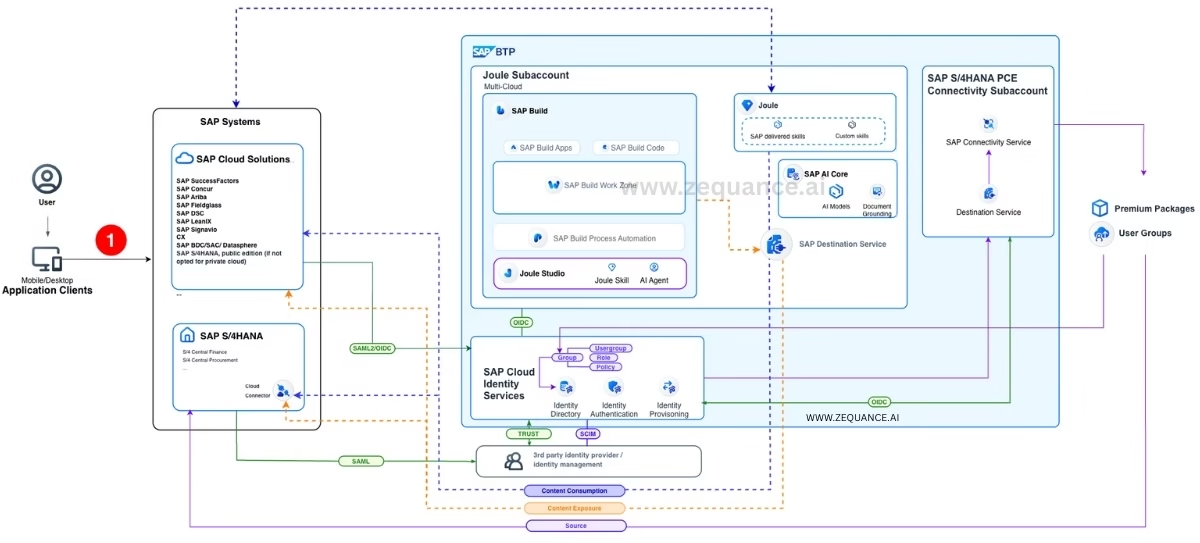
Step 2: Intelligent Orchestration
Joule processes each request by considering three key dimensions:
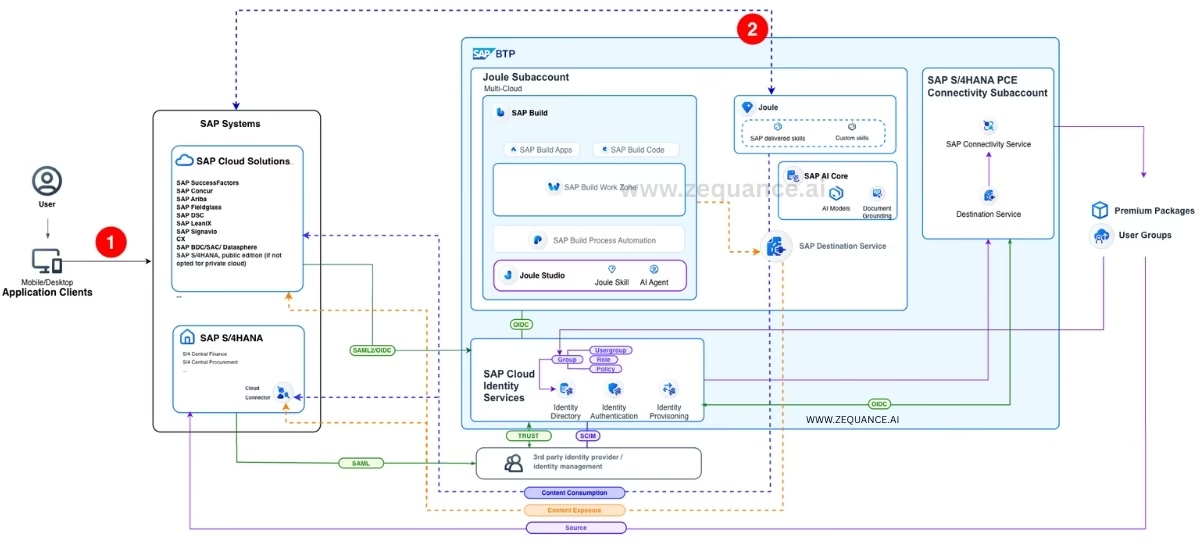
-
Scenario Catalog: Joule analyzes whether the user’s prompt relates to any available scenarios, functions, and skills in SAP cloud applications. This catalog contains metadata about what actions Joule can perform across your SAP landscape.
-
Knowledge Catalog: For informational queries, Joule leverages both SAP knowledge and customer-owned content through Retrieval Augmented Generation for enterprise (RAGe). This approach ensures that responses are grounded in authoritative content rather than generating potentially unreliable information.
-
User Context and History: Perhaps most importantly, Joule maintains awareness of the user’s context—which SAP application they’re using, what other SAP applications are available to them, their roles and permissions, and their conversation history. This contextual awareness is crucial: a user cannot access information or perform actions through Joule that they wouldn’t be able to do directly in the SAP application. This ensures that security and authorization policies remain intact.
Step 3: Large Language Model Processing
Armed with this rich contextual information, Joule formulates an enhanced query for the Large Language Model responsible for dialog management.
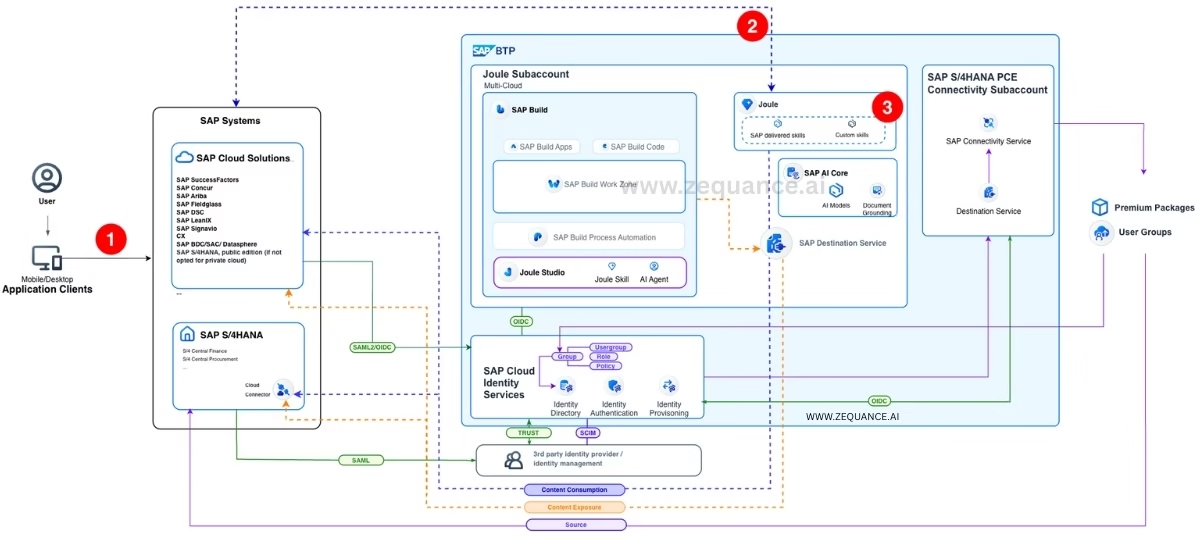
SAP leverages LLMs from its technology partner ecosystem, available through SAP BTP’s AI Foundation and Generative AI Hub. Critically, SAP maintains strict contractual agreements with these partners prohibiting them from training their models on customer data—preserving data privacy and confidentiality.
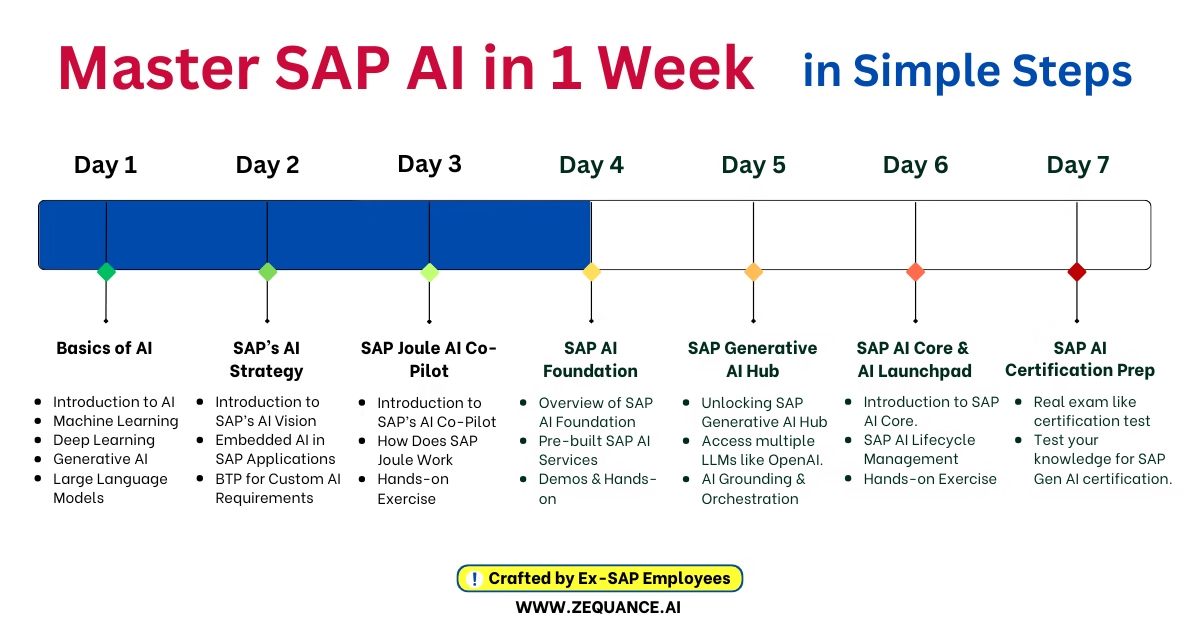
Step 4: Action or Response Generation
The LLM either generates a grounded response or identifies the need to invoke Joule functions connected to SAP Cloud Applications. When actions are required, Joule calls the appropriate SAP backend system to execute the request—such as submitting a time-off request or approving a purchase order.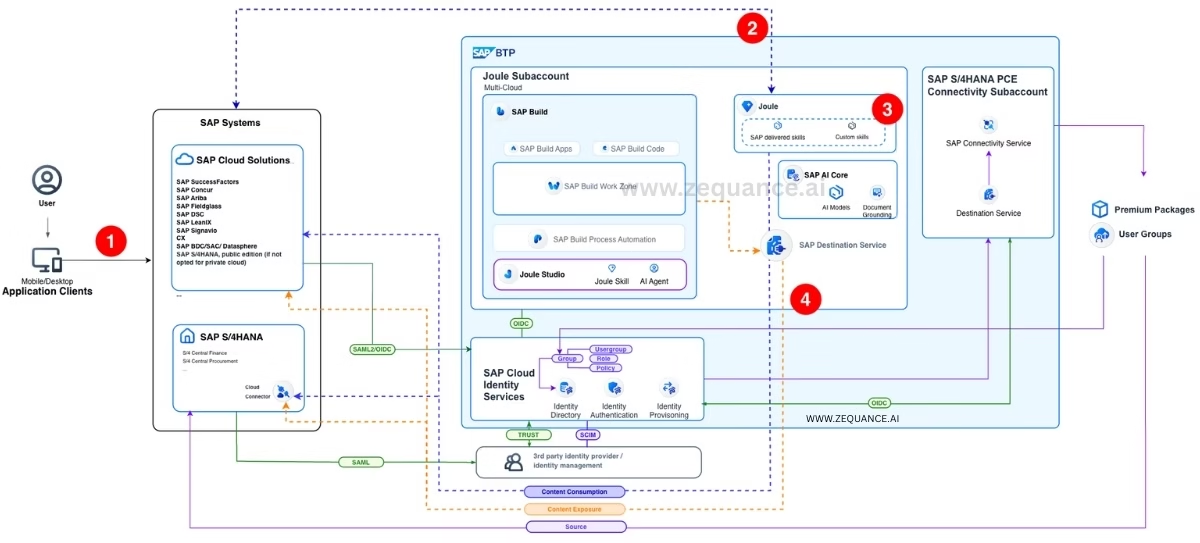
Step 5: Secure Response Delivery
The response is filtered as appropriate and delivered to the user, with the entire conversation processed under enterprise-grade security, data privacy protections, and responsible AI principles.

Key Characteristics: What Makes Joule Different
Several characteristics distinguish Joule from typical enterprise AI implementations:
Revolutionary User Experience
Joule fundamentally transforms how users interact with SAP applications. Rather than forcing users to adapt to rigid system interfaces, Joule adapts to users’ natural communication styles, providing contextual assistance that accelerates processes and delivers actionable insights.
Seamless Integration with Reliable Insights
Because Joule has native access to your enterprise data with proper role-based access controls, it provides reliable insights grounded in your actual business information rather than generic responses. The integration is seamless—Joule isn’t bolted on; it’s embedded.
Customizable and Extensible
Organizations can build custom skills and agents using SAP Joule Studio and SAP BTP, tailoring capabilities to meet specific business needs. This extensibility ensures that Joule can address unique processes and requirements specific to your industry or organization.
Enterprise-Grade Security and Compliance
Joule adheres to stringent security and compliance standards throughout the interaction process. Sensitive business data is protected, and authorization policies are enforced consistently.
Human-Centric Governance and Responsible AI
SAP has built safeguards against inappropriate content and mechanisms to ensure compliance with organizational policies. The company’s AI ethics policy adopts the 10 guiding principles from UNESCO’s Recommendation on the Ethics of Artificial Intelligence, ensuring that AI technologies respect human rights, promote fairness, and contribute to sustainable development.
Looking Forward: The Future of Enterprise Work
As you consider integrating and extending SAP Joule within your organization, think beyond simply implementing another technology tool. Joule represents an opportunity to reimagine how work gets done—reducing friction, accelerating decision-making, and empowering users at all skill levels to interact confidently with complex enterprise systems.
The reference architecture outlined here provides the blueprint for successful implementation, but the real value emerges from how you extend and customize Joule to address your unique business challenges. By building custom skills, integrating domain-specific knowledge, and thoughtfully connecting Joule to your critical business processes, you can create an AI copilot that becomes indispensable to your workforce.
The future of enterprise software isn’t about learning to navigate increasingly complex systems—it’s about systems that understand us, anticipate our needs, and help us accomplish our goals with unprecedented efficiency. Joule is SAP’s vision for that future, and the architecture is ready for you to build upon.
P.S. 7 Easy Steps to Learn SAP AI. Checkout SAP AI Masterclass on Udemy. Crafted by Ex-SAP Employees.
